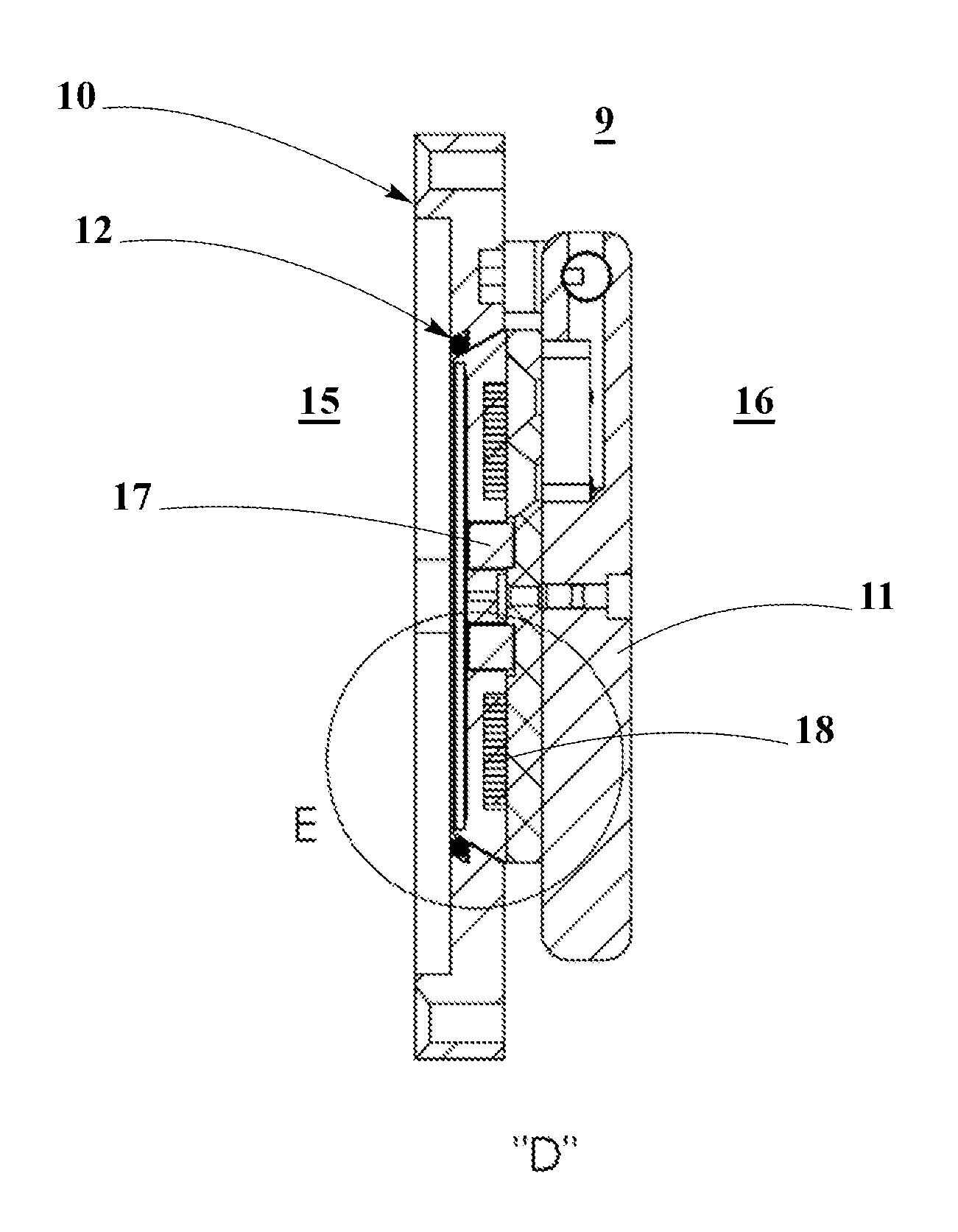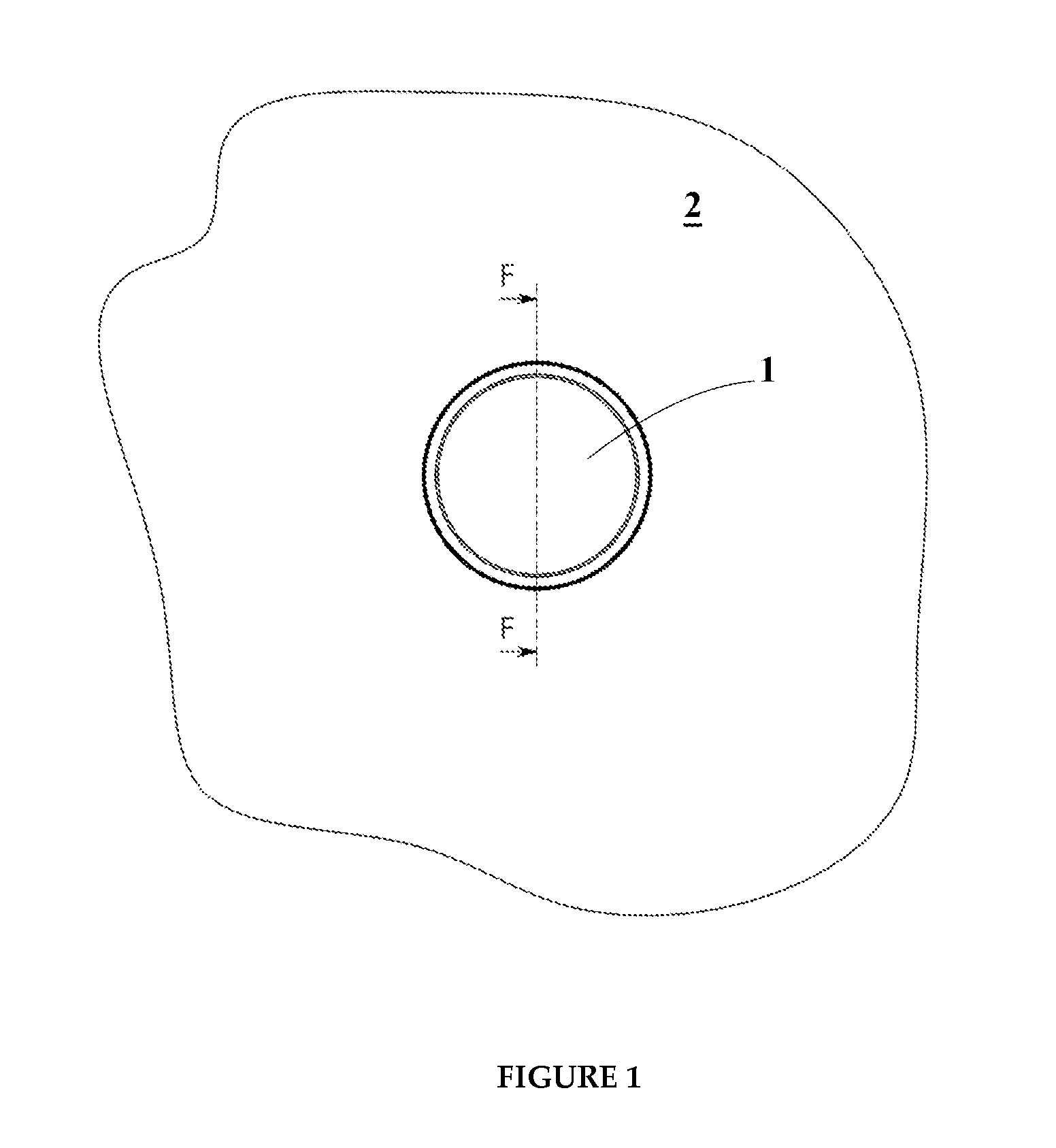Aseptic transfer port
a technology of transfer port and septic tank, which is applied in the direction of pipe heating/cooling, nuclear engineering, mechanical equipment, etc., can solve the problems of tumbling action of components, undesirable, if not prohibitive, and not allowing “dirty” particles to escape into
- Summary
- Abstract
- Description
- Claims
- Application Information
AI Technical Summary
Benefits of technology
Problems solved by technology
Method used
Image
Examples
Embodiment Construction
[0035]A novel concept for an aseptic transfer port is disclosed. Embodiments of the present invention provide for joining and sealing together two isolated enclosures that can be cooperatively joined and opened without introducing contaminants from the environment external to the two enclosures. At least part of each enclosures may be made from a film where a hole can be created upon attachment, thereby effecting an opening. While a typical film may be made of a flexible plastic, other materials with different degrees of flexibility / rigidity are possible. A preferred embodiment involves inductively heating a metal component (e.g., plate or ring), thereby thermally cutting a hole through a plastic film. Some embodiments may optionally further include added inductively heated metal components that can effect microbial sterilization in and around the sealing area between the enclosures.
[0036]Other materials known in the art for providing a barrier impermeable to contaminants may also b...
PUM
 Login to View More
Login to View More Abstract
Description
Claims
Application Information
 Login to View More
Login to View More - R&D
- Intellectual Property
- Life Sciences
- Materials
- Tech Scout
- Unparalleled Data Quality
- Higher Quality Content
- 60% Fewer Hallucinations
Browse by: Latest US Patents, China's latest patents, Technical Efficacy Thesaurus, Application Domain, Technology Topic, Popular Technical Reports.
© 2025 PatSnap. All rights reserved.Legal|Privacy policy|Modern Slavery Act Transparency Statement|Sitemap|About US| Contact US: help@patsnap.com



